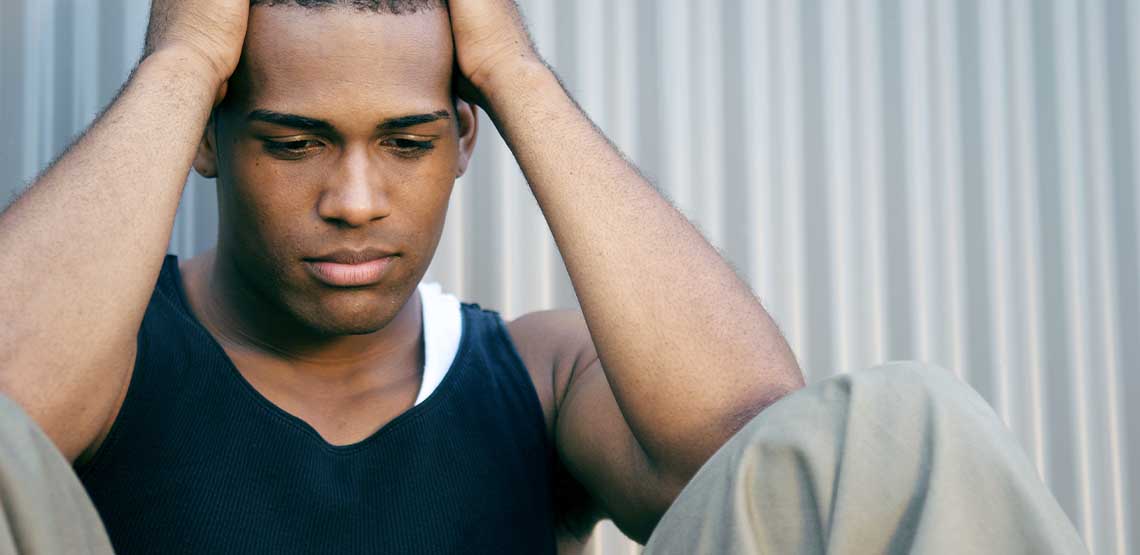What Is Bipolar Depression?
About 2.8% of adults experience bipolar depression. What is bipolar depression? Bipolar depression, sometimes referred to as manic depression, may lead to several difficulties within a person’s life. They may struggle to maintain relationships because of it. Or they may have difficulty keeping a job due to their erratic mood changes. While there is not a cure, there are various treatment options.
In this article, we explore what bipolar depression is, the symptoms of it, how its diagnosed and the treatment options available.
Understanding Bipolar Depression
It is a mental health condition where extreme changes in mood are present. A person often experiences emotional highs, called mania, and extreme lows, called depression. During a mania episode, you may feel euphoric and energetic. At the same time, you may be easily irritable. Ultimately, this may impact your ability to think clearly.
During depressive episodes, you feel hopeless and sad. Many individuals also lose interest in activities they usually find enjoyment in. Depression for those with bipolar depression usually lasts about two weeks. Meanwhile, a manic episode may last days or weeks.
Bipolar Depression Symptoms
How do you know if you or a loved one has bipolar depression?
During manic episodes, a person may have certain signs and symptoms:
- Upbeat and jumpy
- Increased energy
- Increased agitation
- Extreme and exaggerates sense of confidence
- Sleeping less
- Talkative
- Racing thoughts
- Easily distracted
- Making bad or poor decisions, such as using drugs, going on shopping sprees, or having unprotected sex
During the depression side, a person may show:
- Feeling sad, hopeless, or empty
- A lack of interest in activities or things they usually find enjoyment out of
- Weight loss or weight gain
- Sleeping too much or experiencing insomnia
- Fatigue
- Feelings of worthlessness
- Suicidal thoughts or attempts
Bipolar depression may also involve anxiety, continued feelings of sadness and psychosis. Bipolar depression further has a variety of unclear causes. It’s theorized that genetics, brain structure and environmental factors all play a part.
How Is It Diagnosed?
A diagnosis must be made by a healthcare professional, such as your doctor. Usually, this diagnosis is made when a person has one or more manic episodes alongside depression episodes. However, depression episodes are not necessary to make a diagnosis.
Usually, it can be diagnosed, symptoms must have lasted at least one week, lasting all day and every day. However, bipolar depression can be very hard to diagnose. Mood swings are variable, and this becomes even more so in children or adolescents. Yet, these mood swings likely will get worse when the condition is left untreated. This means that manic or depressive episodes may happen more frequently or become more extreme.
In fact, several tests are used to diagnose bipolar depression. These may include keeping a mood journal, physical examination and a mental health evaluation.
The Difference Between Bipolar Depression and Depression
Depression differs from bipolar depression in that a depressed person will not experience any highs or manic episodes. Depression is often categorized by feelings of extreme sadness and worthlessness. While some days may be better than others, often these feelings persist until treatment is sought out.
Treatment
So, what are the treatment options? How can a person cope with bipolar depression?
Medication
Frequently, medications are prescribed right away to help stabilize one’s mood. These medications may include lithium, olanzapine, Xanax and others.
Therapy
Psychotherapy is often recommended. Depending on you and what your physician or mental healthcare provider thinks is suitable, you may benefit from cognitive-behavioral therapy (CBT), psychoeducation, or interpersonal and social rhythm therapy.
Day treatment programs may also be recommended to you. For more severe cases, you may require hospitalization involving in-hospital treatment programs.
Lifestyle Changes
There are various ways you can change your day-to-day to also help manage your mental illness:
- Keeping a set sleep schedule.
- Eating at the same time each day.
- Learning to recognize mood swings (it may help to keep a mood journal for this).
- Exercising regularly.
It’s also important to seek out support and help when you need it. Don’t hesitate to talk to family members or friends.
Other Options
Some other treatment options that may help include acupuncture, electroconvulsive therapy, medications to help you sleep and supplements.
Getting Help Is Crucial
If you or a loved one is experiencing the symptoms described above, seek out professional help. You do not have to do this alone nor should you. There are various treatment options available. It’s all about finding what works for you or your loved one.
